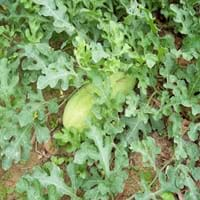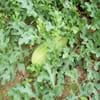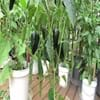Life Span
Annual
Perennial
Origin
Hybrid origin, Africa
Eastern Asia
Types
Not Available
Actinidia arguta, Actinidia giraldii, Actinidia hypoleuca
Number of Varieties
Not Available
Habitat
Cold Regions, Warmer regions
Dappled Shade, open Woodlands
USDA Hardiness Zone
4-9
3-8
Sunset Zone
H1, H2, 1a, 1b, 2a, 2b, 3a, 3b, 4, 5, 6, 7, 8, 9, 10, 11, 12, 13, 14, 15, 16, 17, 18, 19, 20, 21, 22, 23, 24
1a, 1b, 2a, 2b, 3a, 3b, 4, 5, 6, 7, 8, 9, 14, 15, 16, 17, 18, 19, 20
Habit
Prostrate/Trailing
Vining/Climbing
Flower Color
Yellow
White, Ivory
Flower Color Modifier
Bicolor
Bicolor
Fruit Color
Red, Light Green, Dark Green
Green, Yellow green
Leaf Color in Spring
Not Available
Green, Dark Green
Leaf Color in Summer
Gray Green
Dark Green
Leaf Color in Fall
Gray Green
Dark Green
Leaf Color in Winter
Not Available
Light Green
Plant Season
Summer, Fall
Spring, Summer, Fall
Sunlight
Full Sun
Full Sun, Partial Sun
Growth Rate
Very Fast
Medium
The pH of Soil
Neutral
Neutral
Soil Drainage
Well drained
Well drained
Bloom Time
Indeterminate
Spring, Late Spring, Early Summer
Tolerances
Drought
Shade areas
Where to Plant?
Ground
Ground, Pot
How to Plant?
Seedlings
Grafting, Stem Cutting
Plant Maintenance
Medium
Low
Watering Requirements
Keep the ground moist but not water-logged, Over-watering can cause leaf problems or root diseases, Requires regular watering
Average Water Needs, Requires regular watering
In Summer
Lots of watering
Regular watering required
In Spring
Moderate
Moderate
In Winter
Average Water
Average Water
Soil Drainage Capacity
Well drained
Well drained
Sun Exposure
Full Sun
Full Sun, Partial Sun
Pruning
Remove damaged leaves, Remove dead branches, Remove dead leaves
Remove damaged leaves, Remove dead branches, Remove dead leaves
Fertilizers
All-Purpose Liquid Fertilizer, Nitrogen, Water soluble fertilizers
Apply 10-10-10 amount, fertilize twice a year
Pests and Diseases
Aphids, Bacterial fruit blotch, Cabbage looper, Cucumber mosaic, Cutworms, Red blotch
Botrytis head rot, Japanese Beetles, Leaf Rollers, Nematodes, Phytophthora, Root rot, Sclerotinia blight, Spider mites, Thripes
Plant Tolerance
Drought
Shade areas
Flower Petal Number
Single
Single
Foliage Texture
Medium
Medium
Foliage Sheen
Matte
Glossy
Attracts
Not Available
Cats
Allergy
Not Available
Not Available
Aesthetic Uses
Not Used For Aesthetic Purpose
Cottage Garden
Beauty Benefits
Not Available
Not Available
Environmental Uses
Air purification
Shadow Tree
Medicinal Uses
Nutrients, Vitamin C
Antioxidants, Fiber, Folate, Rich in Potassium, Vitamin C
Part of Plant Used
Fruits
Fruits
Other Uses
Used As Food
Grown for shade
Used As Indoor Plant
No
No
Used As Outdoor Plant
Yes
Yes
Garden Design
Edible, Fruit / Fruit Tree, Herb / Vegetable, Tropical, Vine
Edible, Feature Plant, Vine
Botanical Name
CITRULLUS lanatus 'Jubilee'
ACTINIDIA arguta
Common Name
Jubilee Watermelon, Watermelon
Hardy Kiwi
In Hindi
तरबूज
हार्डी कीवी
In German
Jubilee Wassermelone
Hardy Kiwi
In French
Jubilé Watermelon
kiwai
In Spanish
Jubileo de la sandía
kiwi hardy
In Greek
Jubilee Καρπούζι
σκληραγωγημένα ακτινίδια
In Portuguese
Jubileu da melancia
kiwi Hardy
In Polish
Jubileusz Watermelon
hardy kiwi
In Latin
Iubilaeum PEPO
Hardy kiwi
Phylum
Magnoliophyta
Magnoliophyta
Class
Magnoliopsida
Magnoliopsida
Order
Not Available
Theales
Family
Cucurbitaceae
Actinidiaceae
Genus
Not Available
Actinidia
Clade
Angiosperms, Eudicots, Rosids
Angiosperms, Asterids, Eudicots
Tribe
Not Available
Not Available
Subfamily
Not Available
Actinidiaceae
Number of Species
Not Available
Not Available
Season and Care of Jubilee Watermelon and Hardy Kiwi
Season and care of Jubilee Watermelon and Hardy Kiwi is important to know. While considering everything about Jubilee Watermelon and Hardy Kiwi Care, growing season is an essential factor. Jubilee Watermelon season is Summer and Fall and Hardy Kiwi season is Summer and Fall. The type of soil for Jubilee Watermelon is Loam and for Hardy Kiwi is Loam while the PH of soil for Jubilee Watermelon is Neutral and for Hardy Kiwi is Neutral.
Jubilee Watermelon and Hardy Kiwi Physical Information
Jubilee Watermelon and Hardy Kiwi physical information is very important for comparison. Jubilee Watermelon height is 15.20 cm and width 371.00 cm whereas Hardy Kiwi height is 550.00 cm and width 90.00 cm. The color specification of Jubilee Watermelon and Hardy Kiwi are as follows:
Jubilee Watermelon flower color: Yellow
Jubilee Watermelon leaf color: Not Available
Hardy Kiwi flower color: White and Ivory
- Hardy Kiwi leaf color: Green and Dark Green
Care of Jubilee Watermelon and Hardy Kiwi
Care of Jubilee Watermelon and Hardy Kiwi include pruning, fertilizers, watering etc. Jubilee Watermelon pruning is done Remove damaged leaves, Remove dead branches and Remove dead leaves and Hardy Kiwi pruning is done Remove damaged leaves, Remove dead branches and Remove dead leaves. In summer Jubilee Watermelon needs Lots of watering and in winter, it needs Average Water. Whereas, in summer Hardy Kiwi needs Regular watering required and in winter, it needs Average Water.





